Australian performance car enthusiasts are a pretty parochial bunch. They tend to favor either Ford or Holden products, although there is a smaller but no less passionate group with a love for Mopar metal. For those who love their Holdens, any car that received the attention of the late great Peter Brock will immediately command their attention. That is what makes this 2005 Holden VZ Commodore SS Ute something extraordinary. It is a genuine 1-of-1 survivor and is one of the last to receive the great man’s magic touch before cruel fate took him too soon. The Commodore has spent its life in the hands of its first owner, but the time has come for it to find a new home. It is listed here at Shannons Auctions in Sydney, Australia, and will go under the hammer in a timed online auction commencing on Tuesday, 2nd August.
It is difficult to understand this car’s significance without some background information about its creator. Peter Brock was raised in Hurstbridge, Victoria. His family owned a rural property, and it was here that he honed his driving skills and developed the core of his automotive engineering knowledge. He purchased his first car as a lad, spending the extraordinary sum of £5 on an Austin 7. To improve its modest performance, he lightened the car significantly by removing its body to reduce it to little more than a frame and drivetrain. Ever impatient, Brock used the first tool he could find to achieve this feat. His mother was reportedly quite upset when she discovered he had cut the body off the Austin using her ax! The weight reduction brought the desired performance improvements, although its total lack of brakes meant that stopping the beast involved throwing it into an enormous broadside slide. It was here that he developed the car control that served him throughout his professional racing career. If his first car seemed a left-field choice, its successor was extraordinary. Bitten by the racing bug, Brock decided to build a race car in his parent’s chicken shed. The vehicle of choice? A modest Austin A30! He cut away part of the car’s firewall and built a rudimentary frame and cage that allowed him to slot a six-cylinder 179ci Holden engine under the skin. The car was reportedly an animal to drive, but it created such a stir and was so successful that track promoters began paying him appearance money. His exploits brought him to the attention of Harry Firth, who was the Manager of the Holden Dealer Team in 1969. Firth offered Brock a drive in that year’s Bathurst endurance event, and thus his professional racing career began. He remained with the team until the end of 1974 before striking out with his own team. This venture brought limited success, but Holden coaxed him back into the factory fold for 1978. There began an unprecedented run of success. He secured the 1978 Australian Touring Car Championship and won Bathurst for the third time. He returned in 1979 to win Bathurst by a record six laps, sealing his domination in that event by setting a new lap record on the final lap! Keen to prove his versatility, he spearheaded a three-car team to compete in the 1979 Repco Round Australia Reliability Trial, which he promptly won. Ford had withdrawn from circuit racing by this point, and Holden saw little benefit from what was rapidly becoming a one-make series. Its announcement after Bathurst in 1979 that it would also withdraw came as a hammer blow to Australian motorsport. Brock was offered the opportunity to buy the Holden Dealer Team at that point, which he duly did. However, there remained questions about how it was to be funded, and the answer was a stroke of genius. He managed to convince the existing sponsors to extend their contracts and, with the assistance of Holden, established HDT Special Vehicles. The concept was pretty simple. Holden dealerships that contributed funds to the team would have access to limited runs of passenger vehicles modified by HDT. The upgrades allowed the cars to produce more power, while other improvements to suspension, brakes, wheels, and tires made these vehicles total packages. Holden delivered the unmodified vehicles to HDT and then shipped the completed cars to the relevant dealers. Holden had to approve the modifications and also covered any warranty claims. The process also allowed the two companies to work together to build homologation specials in sufficient numbers to qualify for racing. The venture worked perfectly and, by the mid-1980s, represented a multi-million dollar enterprise. However, a couple of events during 1986 and early 1987 saw the relationship turn sour, culminating in HDT releasing an unapproved model called the Calais Director in February 1987. Brock and Holden had previously had some heated discussions over minor unapproved modifications, but the Director took the problems to a higher level. The standard Holden Commodore featured a live rear axle and coil springs as it left the production line. Brock saw this as a shortcoming and engineered a European Opel’s independent rear suspension system to fit under the Commodore’s skin. The flaw in this plan was that he had not received approval to do so and refused to provide a vehicle for the mandatory endurance and crash testing required to confirm that it complied with Australian Design and Safety Standards. Brock refused to budge on the matter, and Holden had no choice but to sever its ties with Brock and his organization. HDT soldiered on buying Holden products at retail prices for modification but no longer received manufacturer support or warranty coverage. The organization signed a contract to upgrade imported Russian Ladas to keep its head above water before Brock did the unthinkable by modifying and selling Ford Falcons. Eventually, all parties involved mended their fences, and Brock returned to the factory racing team in 1994. He eventually retired from competition at the end of 1997, but the desire to produce enhanced vehicles was never far from his mind. With the loss of HDT, Holden signed a contract with Scot Tom Walkinshaw to fill the gap, with Walkinshaw’s Holden Special Vehicles (HSV) becoming the manufacturer’s new performance arm.
While Peter Brock may have retired from professional motorsport in 1997, and HDT Special Vehicles had not produced a new Holden model since 1987, he still possessed the inner passion for creating special vehicles. With a desire to establish a new and stable racing team under the “Team Brock” banner, Peter’s attention again turned to vehicle enhancement. His template bore similarities to his HDT venture, with revenue generated from vehicle sales to be channeled into the team’s racing activities. HSV was producing Holden’s genuine high-performance models, and Brock felt that his new organization could work seamlessly to build some models that complemented the HSV offerings. The concept reached as far as early production before Holden and HSV brought pressure to bear, forcing production to cease. Only five vehicles rolled out of the Team Brock Enhanced organization, and this 2005 SS Ute is unique. Team Brock offered three tuning levels: Group 1, Group 2, and Group 3. No Group 1 cars rolled out of the factory, but four Group 3s did. The only Group 2 was this Ute, and we’ll discuss its mechanical upgrades shortly. Exterior improvements are subtle, and most people would struggle to tell this car from a regular Commodore SS. The changes are limited to a few badges and a set of 18″ ROH Director three-piece wheels. The car presents well in its original shade called Redhot. There are a few minor marks and chips on the lower edge of the front spoiler, but no significant problems. The panels are straight, and a life spent in dry storage allows this classic to remain rust-free. The unique alloy wheels are flawless, as is the glass. The owner used the SS as their daily driver for its first three years, which is precisely what its creator envisaged.
We must delve below the skin to understand the Team Brock Enhanced range. Group 3 models were pretty hardcore and were essentially tarmac rally cars for the road. Brock drew on his experience behind the wheel of Holden’s Monaro model, and we’ve previously featured that car in this article. All cars feature the company’s 335hp LS1 V8. Backing that V8 in this car is a six-speed manual transmission. Group 2 vehicles received a reprogrammed engine management system and a new exhaust to unleash additional power. New springs and Bilstein shocks made the Ute more stable, while massive AP Racing four-wheel disc brakes helped bring things to a safe halt. Several people who have sampled the only Group 2 and a Group 3 feel that the former is the more accomplished road car. The more extensive upgrades Team Brock performed on the Group 3 resulted in a harsher ride that can be unpleasant. This Commodore is no trailer queen. Brock bought the vehicle and clocked 5,000 kilometers (3,100 miles) to bed in everything. Once he performed the modifications and tested them to ensure all was well, he released the car to its lucky owner. They clocked around 80,000 kilometers (50,000 miles) before placing the vehicle into storage. It was regularly run and serviced to ensure it remained in sound mechanical health. They recently replaced the clutch slave cylinder, but it has no known needs for the buyer to tackle.
If the exterior styling upgrades for Team Brock Enhanced vehicles were subtle, the same is true when we examine its interior. We find plenty of standard Commodore SS equipment, including body-hugging bucket seats upholstered in leather and a factory gauge cluster, including a tachometer. Brock additions include a numbered “Brock Enhanced” badge on the dash and the great man’s signature on one spoke of the steering wheel. The interior presents well, but it isn’t in showroom condition. There is some minor wear and wrinkling on the seats, but it is acceptable for a vehicle of this type and age. The rest of the trim and upholstery looks excellent, and there is no shortage of creature comforts. Air conditioning should keep occupants comfortable under the blazing Australian sun, while there are power windows, power locks, a power driver’s seat, cruise control, an AM/FM radio/CD player, and a leather-wrapped tilt wheel.
Peter Brock was a complex individual, but he had a commanding presence. I had the opportunity to meet him on many occasions, and those encounters have left an indelible mark on me. When he was talking to you, his total focus was on you. Nothing would distract him, which helps explain why he would remain at the track signing autographs long after everyone had gone home. His racing record speaks for itself, earning him the nickname “Peter Perfect.” That was a handle he didn’t like, and he was happy to admit that he was far from perfect. There may not have been an engineering degree hanging on his office wall, but he had an innate feel for cars that allowed him to devise and produce some of the most desirable high-performance vehicles Australia saw during the heyday of HDT Special Vehicles in the 1980s. His desire to create cars of that caliber continued into his final years, and this 2005 Commodore SS Ute is a testament to that passion. His sudden passing in a rally accident in 2006 left a hole in Australian motorsport that will never be filled. It may be nearly sixteen years since that fateful day, but time hasn’t diminished his legendary status. The auction estimate on this classic is between A$75,000 – A$95,000, but I wouldn’t be surprised if the bidding reaches double that before the hammer falls.





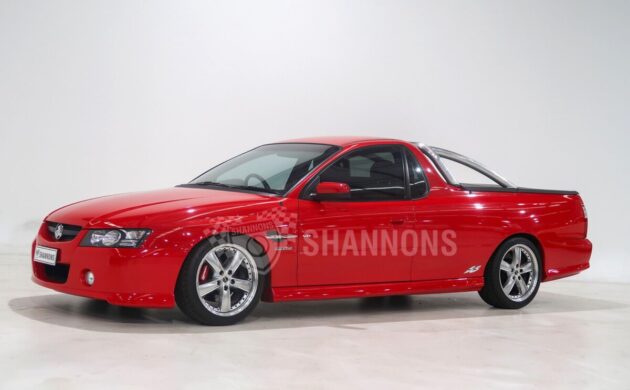
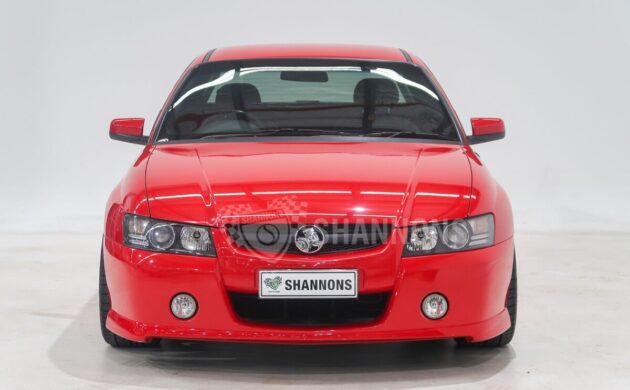
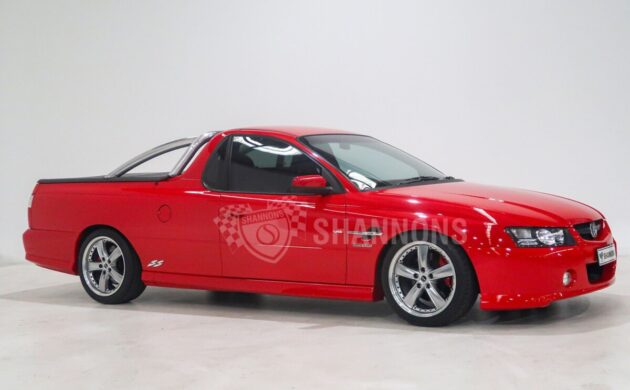
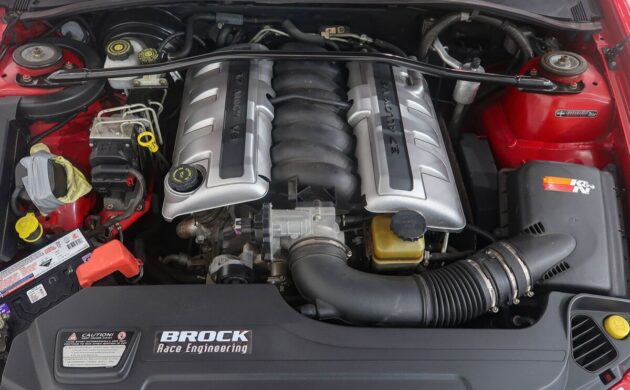
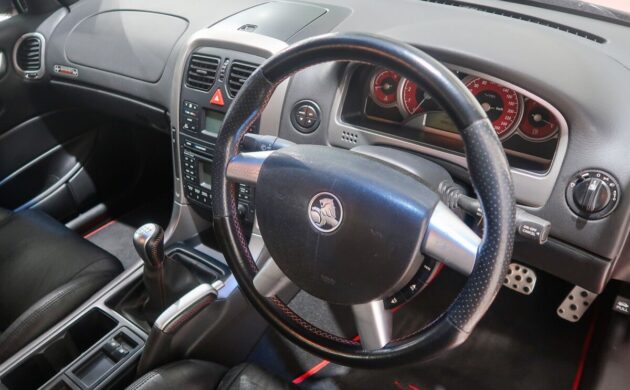
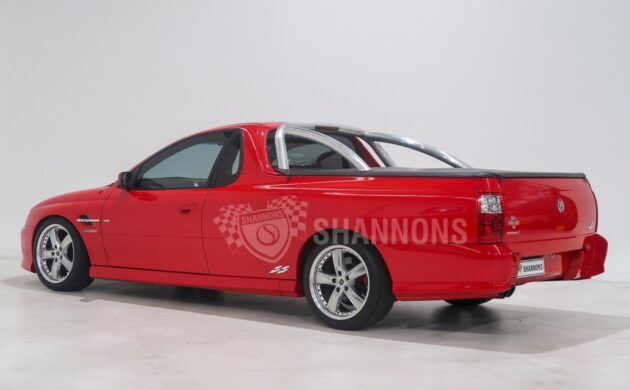
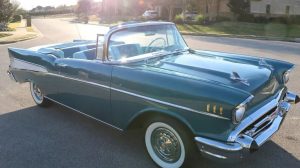
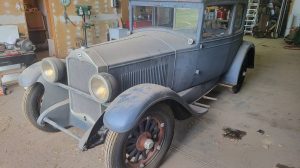
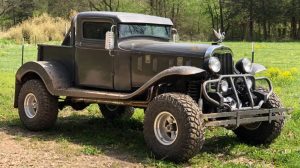



Yeah remember when, before the axe was given to Pontiac the division held a naming contest. They wanted to bring this to our shores as a Poncho. Don’t know if it would have sold as the GTO, was not a huge sales success. But it may have kicked some life into the division. Always thought the goat shouldn’t have been so heavily optioned like the original. But they just run them down the assembly line.
Thanks for another fine writeup, Adam!
It really is sad that the GM honchos in Detroit didn’t figure out what a prize they had in both Holden and Peter Brock. I agree with Cadmanls that Pontiac might have had a better chance at survival if they had adopted both from the Australian division.
Of course they didn’t really know how to exploit Opel, either (can you say “Cadillac Catera?”) and thus, in my view, wasted another opportunity. Without knowing the inside details, I’d say a fair amount of “NIH” was involved.
I would be the wrong custodian for this Ute: The mileage would be doubled in short order! Good thing I can’t have it, thanks to the 25-year rule (and also because I can’t afford it)….
Best Barnfinds write-up of the year. Felt like old R&T article in depth. Thanx
Ah GM, GM, GM, you should have imported these into the American market as the El Camino. You could have sold every one you built…But since you didn’t, I guess that’s one reason you became Obama Motors in 2009
What a great artical, the best I have ever read on B/F. I wanted the car before I read the story, now I would kill for it. Never been to Australia but spent a month in New Zealand in 2000. I fell in love with everything ,but I especially wanted a Holden Ute, of course ,I found out that wasn’t possible, unless I moved. Twenty some years later, I still want to move.
I would luv to own this, but…………..
I first met Peter Brock in his small factory in Victoria called the Diamond Valley Speed Shop. Through a mutual friend, I printed Peter’s first 1/2 A4 promo sheet for his business featuring a pic of that hard-to-handle 6 cylinder powered Austin A30 that he raced all over the place and he did extremely well leaving most in his dust.
If it wasn’t for better research by him on the track that eventually took his life, he would still be around today doing what he did best. An absolute racing icon sadly missed. I bought 2 of his Holden Special Vehicle cars, the Holden VK series in 1984 including the blue beast that he raced so well at Bathurst.